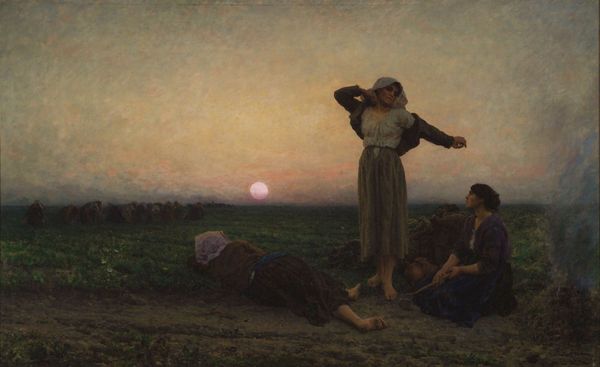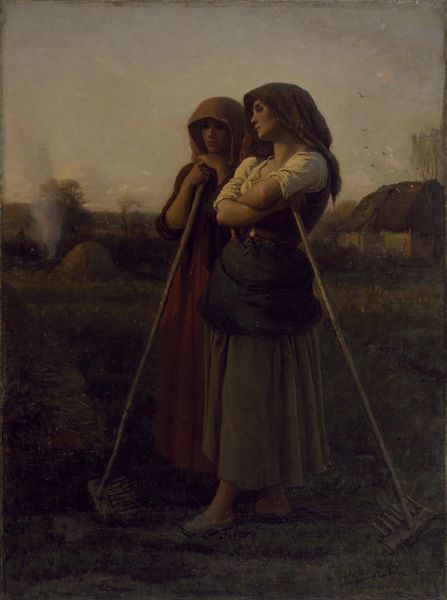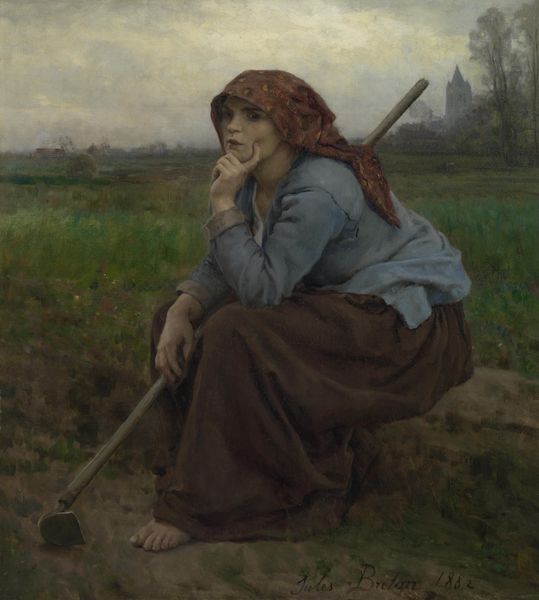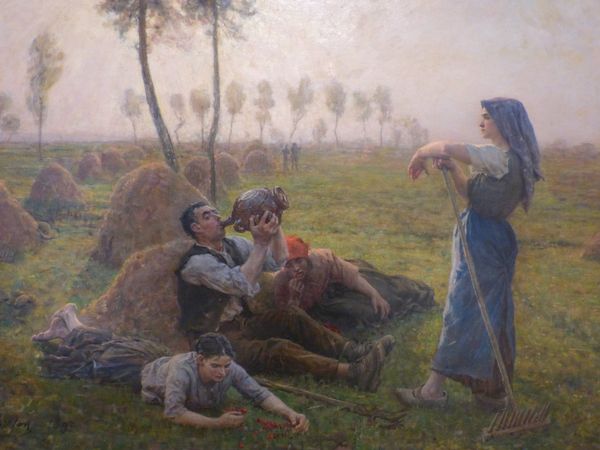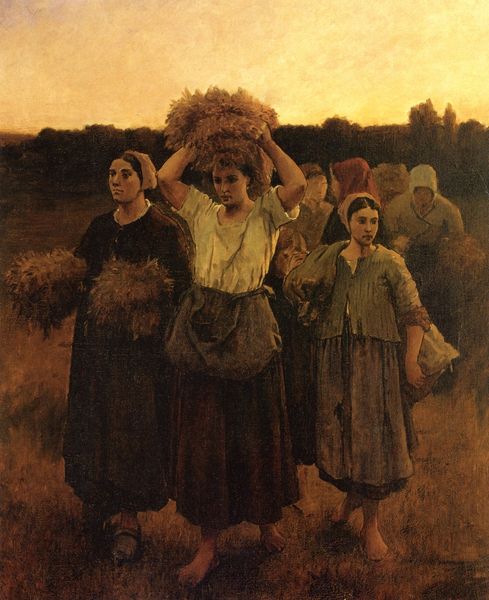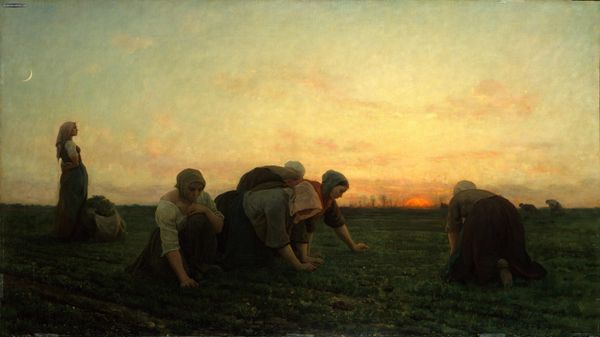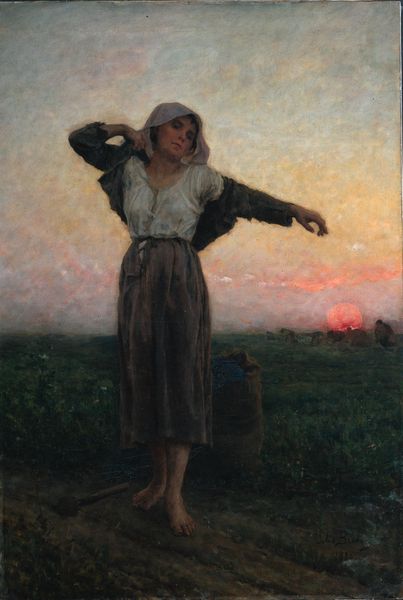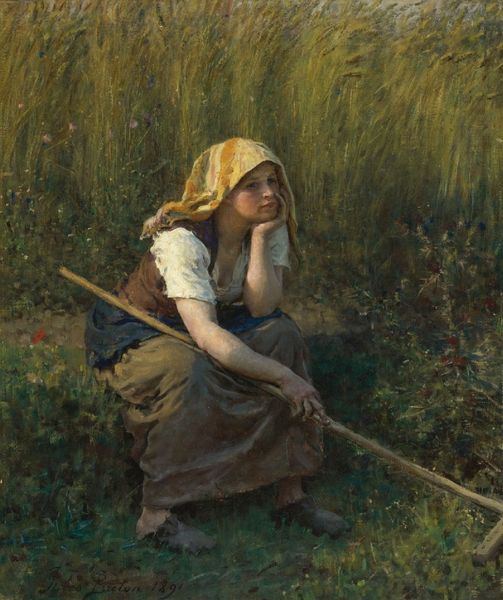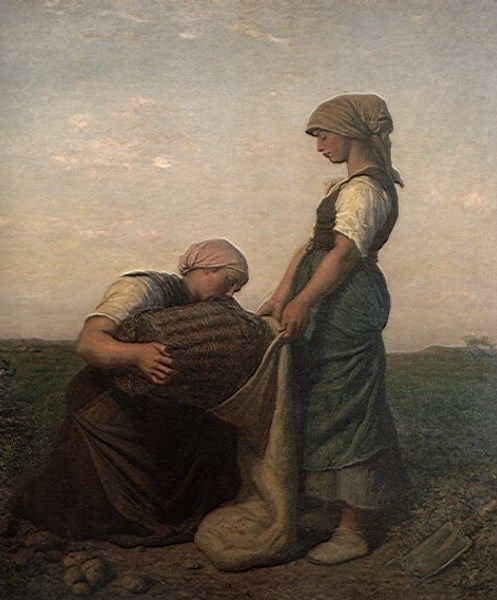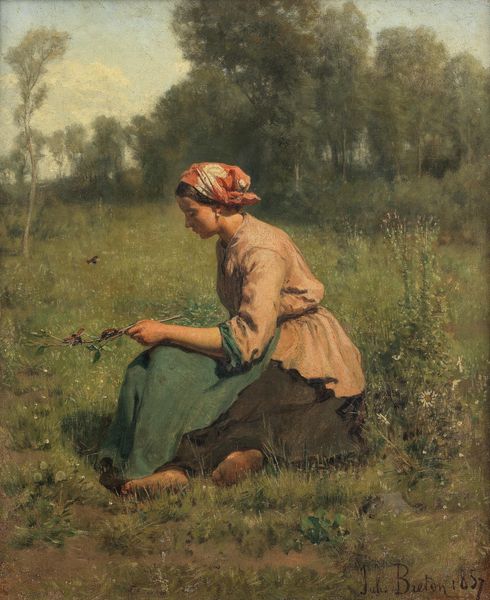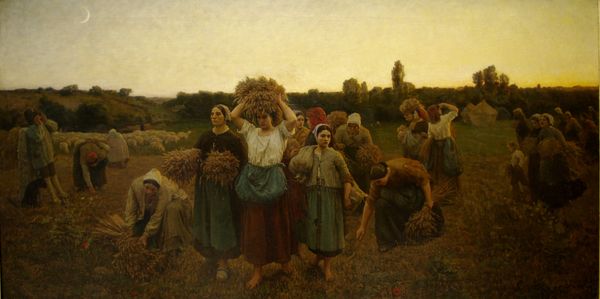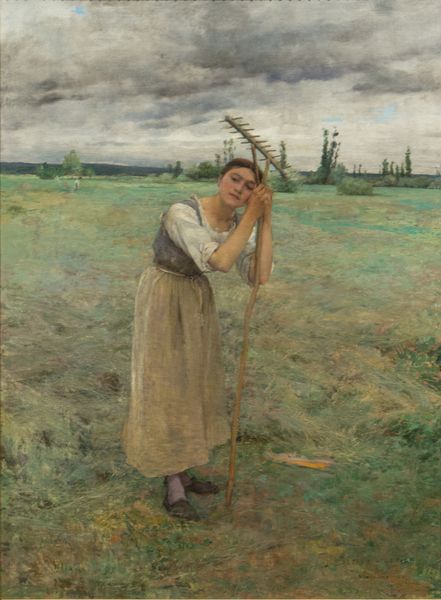
Dimensions: 90 x 116.3 cm
Copyright: Public domain
Curator: Here we have Jules Breton’s “Evening,” created in 1860. It resides here, in the Musee d'Orsay, and showcases Breton’s masterful ability to capture the beauty and solemnity of rural life. Editor: I'm struck by the somber mood of this work, a sort of hushed resignation. The colors feel like twilight, a melancholic memory rendered in paint. I can almost smell the dust from the fields and feel the hard-packed earth beneath bare feet. Curator: Breton belonged to a lineage of painters committed to portraying peasant life with a heightened sense of dignity. What seems initially sentimental has social and political implications for the art's accessibility to a growing public audience and those peasant communities represented. Editor: Dignity, yes, but also fatigue, a weighty weariness. Her slumped posture, the way her gaze drifts downwards... It speaks of a life tethered to the land, to endless labor under an endless sky. Do you think he was at all conscious of that inherent paradox of his situation as a bourgeoise male artist representing rural female realities? Curator: I’d wager that, as part of the artistic milieu that defined French Realism, that inherent paradox was not lost on Breton, and many artists of his ilk who grappled with depicting the peasantry. Though his brand of Realism, unlike that of Courbet, certainly softens the harsher aspects of that labor to provide a more palatable image to potential art buyers. Editor: True, there's an idealized serenity that softens the blow of reality, doesn't there? But is there beauty in the grit? Her strong hands, calloused maybe, and the sun-kissed weariness etched onto her face. The gold hue on the back crops reminds me that despite what, her home exists at the end of the day. Curator: I concur. The formal handling of light contributes much to Breton's reputation as a vital and sensitive genre painter during the late 19th century in France. While it sentimentalizes labor to an extent, its accessible presentation spoke directly to the increasing social importance of paintings shown at the Salon, influencing what public art could do. Editor: For me, the success lies in Breton's portrayal of humanity facing universal, human, struggles with something noble. Curator: Perhaps "Evening" is, at its heart, a monument to the endurance and quiet fortitude of the human spirit under even harsh conditions. Thank you for your comments, and feel free to discover more perspectives within the museum's wide collection.
Comments
No comments
Be the first to comment and join the conversation on the ultimate creative platform.
